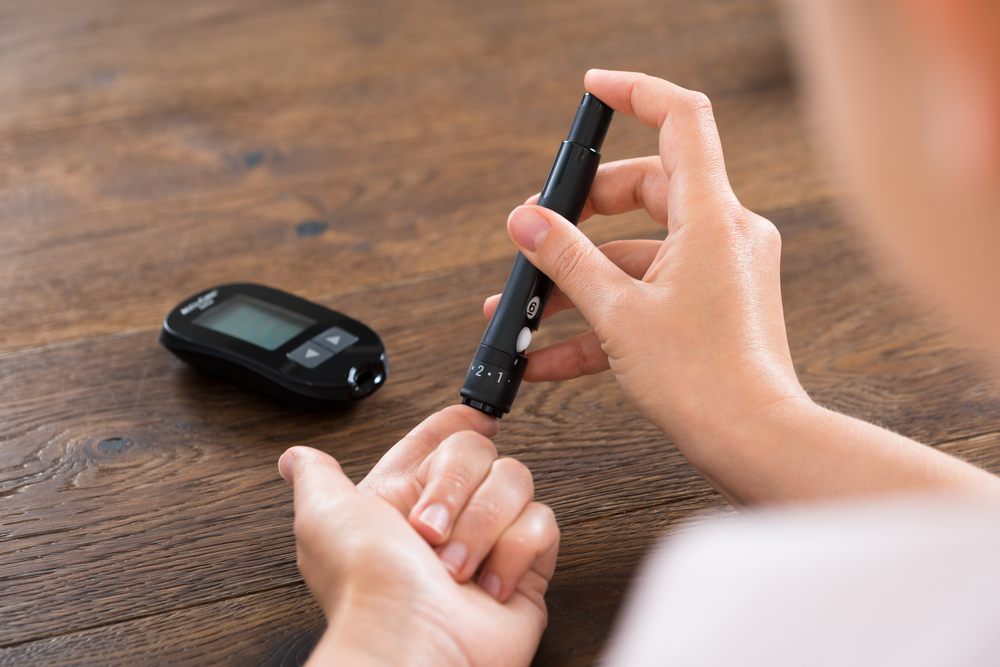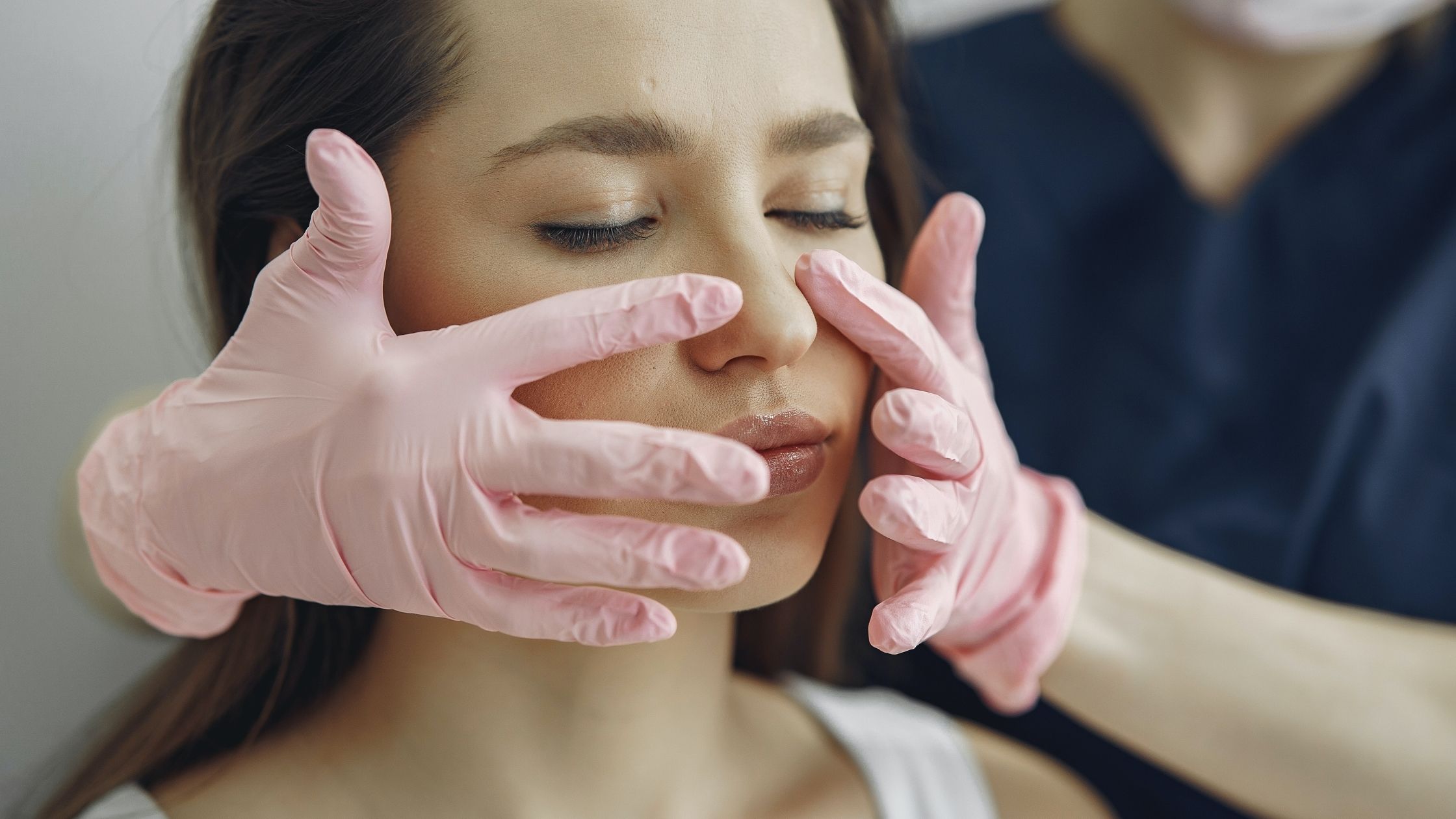- Your blood glucose levels play a significant role in whether you will be eligible for elective plastic surgery.
- The general recommendation (and sometimes requirement) is that patients maintain an HbA1c level of 7% or less before and after surgery to reduce the risk of postoperative complications.
- Patients who are significantly overweight or obese face a 72% higher risk of experiencing postoperative complications.
- When preparing for and recovering from plastic surgery, patients with diabetes should do everything possible to keep their blood sugar levels within (or mostly within) non-diabetic levels for the sake of a healthy recovery.
Can People with Diabetes Undergo Plastic Surgery?
A diagnosis of diabetes shouldn’t limit a patient’s options for plastic surgery, but how you manage your diabetes will have a significant impact on your eligibility for surgery as well as your overall recovery. Although there is no known cure, type 2 diabetes can be reversed through various lifestyle changes.
The first and most important factor impacting whether you can be approved for plastic surgery as a diabetic is your overall blood sugar and HbA1c levels. The higher your A1c is, the less likely you will be approved for any type of elective surgery, including plastic surgery.
In a nutshell, when blood sugar levels are too high, the risk of infection during the healing process is also incredibly high. Years of high blood sugar levels prior to surgery indicates you could also be facing complications from diabetes, such as damage to your fingers, toes, eyes, kidneys, and especially your skin.
Your HbA1c is the first factor that will give you a green light for surgery. Usually referred to as “A1c,” your hemoglobin HbA1c measures the amount of Advanced Glycogenated End-Products (AGEs) that have accumulated in your blood over the previous 3 months. This test is usually performed by your diabetes healthcare team every 3 to 6 months. Using your A1c result, your average blood sugar level, also known as estimated average glucose (eAG), can be determined.
Non-diabetic A1c levels are generally below 5.7%, and sometimes as low as 5.0%, which translates to a blood sugar level of 97 mg/dL and remaining within 70 to 130 mg/dL even after eating.
If you have diabetes and your A1c is above 7%, that equates to a blood sugar level of 154 mg/dL and an overall range of 123 to 185 mg/dL — in other words, well above normal.
For elective surgeries like most plastic surgery options, an A1c below 7% is recommended and often required by the surgeon. If your A1c is currently above 7% and you’re eager to undergo a specific plastic surgery, talk to your surgeon and diabetes healthcare team about how to improve your blood sugar levels.
For some individuals with diabetes, improving their A1c may not be enough if years of high blood sugar levels have already taken a toll on their overall wellbeing.
What Are the Risks?
Once approved for surgery, there will be a great deal of responsibility on your shoulders to manage your blood sugar as tightly as possible before and after surgery. This emphasis on blood sugar control is entirely due to the fact that the higher your blood sugars are, the more likely you’ll experience complications while recovering from surgery.
While all plastic surgery procedures come with a variety of risks, the specific risks associated with for those with diabetes include:
- Infection
- Wound reopening
- Incision reopening
- Delayed or impaired healing
As outlined in the study, Defining the Association Between Diabetes and Plastic Surgery Outcomes, “for patients undergoing plastic surgery, diabetes is associated with an increase in a multitude of postoperative complications — as well as in-hospital recovery times. Diabetes status should thus be evaluated and addressed when counseling patients preoperatively. Tissue perfusion, which results in inadequate antibiotic penetration and underlying immune compromise, is cited to contribute to an increase in complicated skin and soft-tissue infections in diabetic patients.”
Patients with diabetes who are insulin-dependent face a much higher risk of complications than non-insulin-dependent patients.
Additional Risks for Obese Patients
Obesity poses a significant risk to the recovery process as well. The Obesity Society explains that 90 percent of people with diabetes are overweight or obese, which makes obesity a crucial detail to consider when evaluating the risks of undergoing plastic surgery.
A recent study published by the American Society of Plastic Surgeons (ASPS) revealed obese patients are nearly twice as likely to make an emergency visit to the hospital within 30 days of their surgery. An obese patient’s chances of needing to visit the emergency room after surgery is approximately 35% higher than with non-obese patients.
The study adds that obese patients have a 72% higher risk of experiencing adverse events or complications within the first month after surgery, while noting that surgeries for obese patients were also more expensive.
“These increased risks led to higher hospital charges for obese patients, with average cost differences being approximately $3,900 after liposuction, $7,100 after abdominoplasty, and $7,400 after breast reduction. The rate of hospital visits was highest for obese patients undergoing abdominoplasty who had three or more comorbid conditions.”
Keep in mind that your insurance company may not cover those extra costs. “Because most insurance companies won’t cover complications associated with elective cosmetic procedures,” notes Dr. Michelle Ruth Sieffert, a plastic surgeon associated with Wright State University in Dayton, Ohio, “these additional costs may fall on the patient.”
Risks During Diabetes-Related Wound Surgeries
The ASPS found that patients with diabetes undergoing surgery on their skin for diabetes-related chronic wounds are at the greatest risk of developing complications if their blood sugar levels before and during surgery were high.
“Blood glucose levels and diabetes control were analyzed as risk factors for wound dehiscence (a serious complication in which the surgical incision re-opens), wound infections, and the need for repeat surgery. Blood glucose levels over 200 mg/dL were considered to represent elevated blood glucose.”
Patients with higher blood sugar levels before or after surgery are at a much greater risk for wound complications. More specifically, the study found that 44% of patients whose blood sugar levels were high before their surgery experience dehiscence, compared to only 19% of the group whose blood sugars were in a healthy range prior to surgery.
A1c levels played a role, too — further emphasizing that blood sugars in the months and weeks leading up to surgery are crucial. The study found that patients with higher blood sugar levels and A1c results were more than three times as likely to experience dehiscence.
Special Considerations Before, During, and After Surgery
Tight blood sugar management in the days leading up to, during, and in the weeks following your surgery will be imperative to your recovery, safety, and overall success of the procedure.
Take the following steps to track and improve your blood sugar levels:
- Use a glucometer to test your blood sugar regularly, ideally 2 to 4 times per day.
- If you have Type 2 diabetes, consider non-insulin medication options that address insulin resistance and/or insulin secretion issues.
- If you have Type 1 diabetes, consider non-insulin medication options that address insulin resistance, as well as your liver’s glycogen output.
- Consider fast/rapid-acting insulin doses for meals.
- Know your basal rates or long-acting insulin doses for 24-hour insulin needs.
- Be mindful of your diet by reducing carbohydrate intake, eating more whole foods, increasing your vegetable intake, and reducing processed/packaged foods.
- If you aren’t currently active, consider adding even just 30 minutes of walking to your day to improve your sensitivity to insulin, reduce your blood sugars, and lose weight.
Blood Glucose Targets
The American Diabetes Association (ADA) recommends people with diabetes aim for the following blood sugar and A1c goals.
- A1c: Less than 7%
- Estimated average blood sugar: 154 mg/dL or lower
- When you wake-up, before eating: 80–130 mg/dL
- Before a meal: 80–130 mg/dL
- Within 2 hours after eating: Less than 180 mg/dL
Reducing Basal/Long-Acting Insulin Doses
If your surgery is going to interfere with your ability to eat for several days, you should talk with your healthcare team about how to reduce your basal rates or long-acting insulin dose.
A typical reduction for an extensive decrease in diet can be as much as 50% less insulin.
Insulin Pump and Continuous Glucose Monitors
Depending on the type of surgery, your surgeon may ask that you remove your insulin pump (and continuous glucose monitor) and receive insulin intravenously during your surgery. This allows the surgical team to adjust your insulin doses themselves since you may not be conscious for several hours during surgery.
In many cases you may be allowed to keep it on, but be sure to discuss this with your surgeon and your diabetes healthcare team well in advance. Even if you are welcome to wear your pump and CGM during surgery, documenting the approval will likely require a certain amount of paperwork.
» Need help improving your blood sugars to meet surgery goals? Consider working with a certified diabetes educator or online diabetes coach. Additionally, here is a list of highly recommended diabetes books to better help you achieve your goals.









